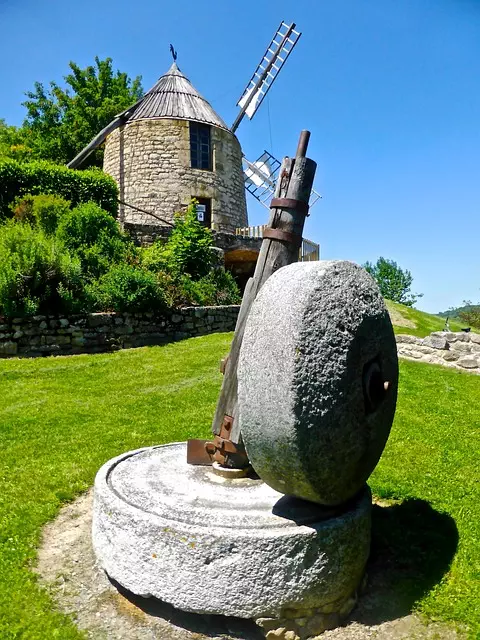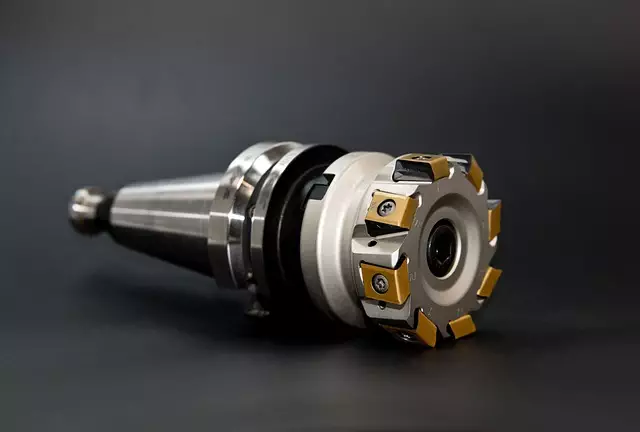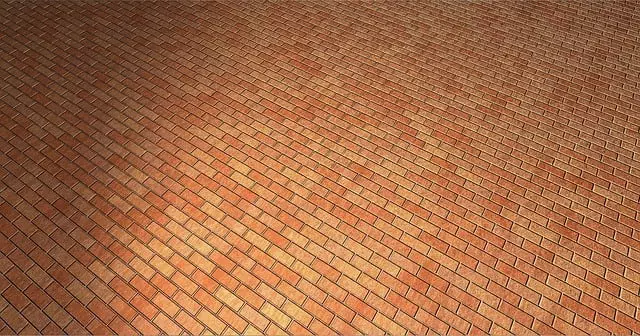Pavement milling and grinding plays a significant role in maintaining Toledo, Ohio's road infrastructure, enhancing structural integrity and performance. This process involves carefully removing specific layers of the road surface, typically ranging from one to several inches, to address aging and wear. In Toledo, this method is integral to routine infrastructure maintenance, ensuring safety and longevity of local roadways through precise removal using advanced machinery. The process extends road lifespans, optimizes the application of sealants and overlays, improves skid resistance, water drainage, and overall road quality. The recycled milled material is used for new construction projects, emphasizing a commitment to sustainability. Toledo's approach to pavement milling and grinding is marked by precision, efficiency, and minimal disruption, with careful planning to mitigate traffic disruptions. This initiative underscores the city's dedication to high-quality public works investments, informing future maintenance plans and supporting urban mobility and safety. The success of Toledo's pavement milling and grinding operations is a reflection of its embrace of modern technology and expertise in road maintenance. Advancements in technology have made partial-depth milling particularly effective in Toledo, offering a non-invasive solution to address specific issues with precision, while adhering to environmental and safety regulations. The city's use of GPS-guided machinery and sophisticated sensors exemplifies the sector's advancements, leading to safer, more durable roads. Toledo's infrastructure maintenance teams are at the forefront of implementing these state-of-the-art techniques, ensuring optimal outcomes in road maintenance.
Partial-depth milling stands as a pivotal technique in modern road maintenance, offering a cost-effective and efficient solution for pavement rehabilitation. This article delves into the intricacies of pavement milling and grinding, a process that involves removing specified layers of a road’s surface to repair or resurface it. From its practical application as demonstrated in Toledo, Ohio, to the advanced equipment and techniques employed, we explore the multifaceted benefits and best practices in this field. Join us as we examine how this technology is revolutionizing the infrastructure landscape, enhancing safety, and extending the life of roadways across the nation.
- Understanding Pavement Milling and Grinding: The Process Explained
- Pavement Milling and Grinding to Toledo, Ohio: A Case Study
- Benefits of Partial-Depth Milling for Road Maintenance
- Equipment and Techniques in Partial-Depth Milling Operations
- Best Practices and Recent Advancements in Pavement Milling and Grinding Technology
Understanding Pavement Milling and Grinding: The Process Explained

Pavement milling and grinding is a critical process in road maintenance and construction, often referred to as pavement rehabilitation or surface milling. This technique involves removing the top layer of an existing paved surface to a predetermined depth, typically ranging from one inch to several inches. The goal of this process is to restore the structural integrity and improve the performance of the road, which can be compromised due to aging, wear, or damage. In Toledo Ohio, as in many other locations, this method has become an integral part of infrastructure upkeep, ensuring that roads remain safe for travelers. The milling operation can remove various materials, including asphalt concrete and Portland cement concrete, allowing for the application of new surface treatments or structural layers beneath. This process not only extends the lifespan of a road but also facilitates the efficient distribution of subsequent pavement sealants and overlays, thereby enhancing skid resistance, water drainage, and overall road quality.
The equipment used in pavement milling and grinding is sophisticated and highly specialized. It consists of large machines with rotating drums that have teeth or picks. These machines can be adjusted to mill the pavement to the desired depth, ensuring precise removal of material. In Toledo Ohio, the use of state-of-the-art milling equipment ensures a uniform and accurate cut across the road surface. This precision is essential for the subsequent layers to bond correctly with the existing road structure. Additionally, the milling process generates recyclable materials from the removed pavement, which can be reused in new construction projects, promoting sustainability and environmental responsibility. The entire operation is conducted with careful planning and coordination to minimize disruptions to traffic flow, making it a versatile and efficient solution for road maintenance.
Pavement Milling and Grinding to Toledo, Ohio: A Case Study

Pavement milling and grinding serve as critical processes in road maintenance and infrastructure development, enhancing roadway safety and longevity. In Toledo, Ohio, this practice has been meticulously implemented to address the specific needs of its road network. The city’s commitment to maintaining high standards of road quality is evident in the adoption of advanced pavement milling and grinding techniques. These methods not only facilitate the efficient removal of surface layers but also ensure that the remaining structure is prepared for subsequent repairs or overlays, effectively extending the life of the road. The precise control over depth and asphalt removal allows for targeted interventions where they are most needed, minimizing disruptions to traffic flow while maximizing resource utilization. The city’s infrastructure teams work diligently to ensure that these operations are carried out with minimal inconvenience to residents and commuters, leveraging state-of-the-art equipment and experienced operators to achieve optimal results. This case study highlights Toledo’s strategic approach to maintaining its roadways through the judicious use of pavement milling and grinding technologies, underscoring the importance of proactive infrastructure management for urban mobility and safety. The data collected from these operations further informs future maintenance plans, contributing to a more robust and cost-effective strategy in public works investments within Toledo, Ohio.
Benefits of Partial-Depth Milling for Road Maintenance

Partial-depth milling represents a significant advancement in road maintenance practices, offering numerous benefits over traditional full-depth reclamation or complete pavement removal and replacement. This method involves removing only the top layer of a paved surface to a specified depth, which allows for targeted repair and resurfacing without the extensive disruption associated with more invasive methods. Pavement milling and grinding, a process that encompasses partial-depth milling, is a cost-effective solution for maintaining roadways. It enables precise adjustments to pavement profiles, which can correct issues like rutting, patch repairs, and surface irregularities. This precision ensures a smoother ride for motorists and enhances safety on the roads.
In Toledo, Ohio, the application of pavement milling and grinding has been instrumental in maintaining the city’s extensive network of roadways. The approach not only extends the lifespan of the pavement but also minimizes traffic disruptions, which is particularly beneficial for a bustling metropolitan area. The recycled materials from the milling process can be utilized in new paving projects, further reducing material costs and environmental impact. Additionally, the technique allows for quicker return to service times, meaning roads can be restored to operational status faster than with traditional methods. This efficiency in road maintenance contributes to the overall infrastructure health of Toledo, ensuring that its transportation network remains robust and reliable for all users.
Equipment and Techniques in Partial-Depth Milling Operations

Partial-depth milling is a specialized process within pavement milling and grinding operations that involves removing specific layers of asphalt or concrete from a paved surface to a predetermined depth. This targeted removal allows for necessary repairs, such as fixing utility lines or road base issues, without the need for complete pavement replacement. The precision of this method minimizes material waste and reduces construction time and associated costs.
The equipment utilized in partial-depth milling includes various types of machinery designed to handle different aspects of the operation. Milling machines, also known as cold plans or cold mills, are the core machinery that actually remove the pavement material. These machines come in a range of sizes and configurations, with some being tailored specifically for partial-depth operations. They are equipped with cutting tools and depth control mechanisms to ensure the precise removal of designated layers. Support vehicles, including loaders and haul trucks, are integral to the process as they transport the milled material to its next destination, whether for recycling or disposal. In Toledo, Ohio, for instance, where infrastructure maintenance is a year-round priority, these operations are often conducted by seasoned contractors who adhere to strict environmental and safety standards. The techniques employed in such regions reflect a combination of technological advancements and adherence to best practices in pavement milling and grinding, ensuring the longevity and safety of roadways while accommodating the needs of the urban infrastructure.
Best Practices and Recent Advancements in Pavement Milling and Grinding Technology

In recent years, pavement milling and grinding technology has advanced significantly, offering improved precision and efficiency in road maintenance and construction. Best practices in this field emphasize the importance of accurate machine setup, optimized cutterhead speed, and precise control of milling depth to achieve desired pavement profile and surface texture. Advanced sensors and feedback systems ensure that each pass removes only the prescribed layer, minimizing material waste and reducing the time required for project completion. These technologies are instrumental in maintaining the integrity and safety of roadways, contributing to smoother driving experiences and extending pavement lifecycles.
In Toledo, Ohio, these advancements are being implemented effectively. Local contractors have adapted to new milling and grinding techniques that incorporate the latest in technology for project management and machine operation. The use of GPS-guided machinery allows for high-precision milling, ensuring that only the specified depth of asphalt or concrete is removed, regardless of the pavement’s complexity or the area’s topographical challenges. The integration of these systems not only streamlines the process but also enhances the final outcome, leading to roads that are both safer and more durable. These advancements underscore the commitment of Toledo’s infrastructure maintenance teams to employing cutting-edge pavement milling and grinding practices for optimal results.


